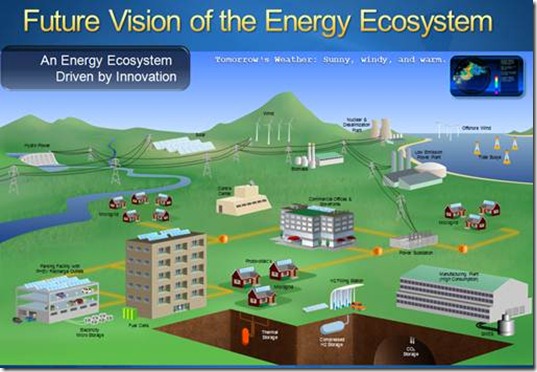Austin Taking Significant Steps Toward Microsoft Vision of Future Energy Ecosystem
Over the last several years we’ve been talking with our customers about the inevitability of bi-directional energy flows, where traditional energy consumers might become producers of small amounts of energy that could feed the larger grid. To some, this scenario has seemed far-fetched or too futuristic.
We’d just like to bring readers’ attention to a story in the Austin American Statesman yesterday, about the Austin City Council’s approval Austin Energy’s proposal to better manage their solar incentives for businesses’ choosing to purchase solar arrays on their rooftops.
The vote actually reduced the City of Austin’s outlays for rebates for solar installations, and instead seeks to spread those rebates over a 10-year period. Payments would be reduced for those systems that produce below what  Austin Energy needs.
Austin Energy needs.
The story demonstrates an interesting dynamic with which utilities will struggle in the new energy environment.
By providing incentives for businesses and homeowners to go off-grid, the city actually encourages revenue decreases for Austin Energy (and, by the way, the City of Austin, which puts Austin Energy revenues into its general fund). Less money means fewer upgrades and less reinvestment in the grid. It’s a catch-22 situation. It’s obvious from the article that Austin Energy wants to move toward cleaner energy but is grappling with the best way to do that.
But, in our view, these sorts of dynamics will require utilities to gain ever better control of their operations. By control, we mean complete data integration in systems that give ever more real-time insight into the vast array of utility operations, from supply chain to production and then billing. Austin Energy appears to be very focused on increasing their control of their operations, especially as it may play out in the future smart energy ecosystem. – Jon C. Arnold